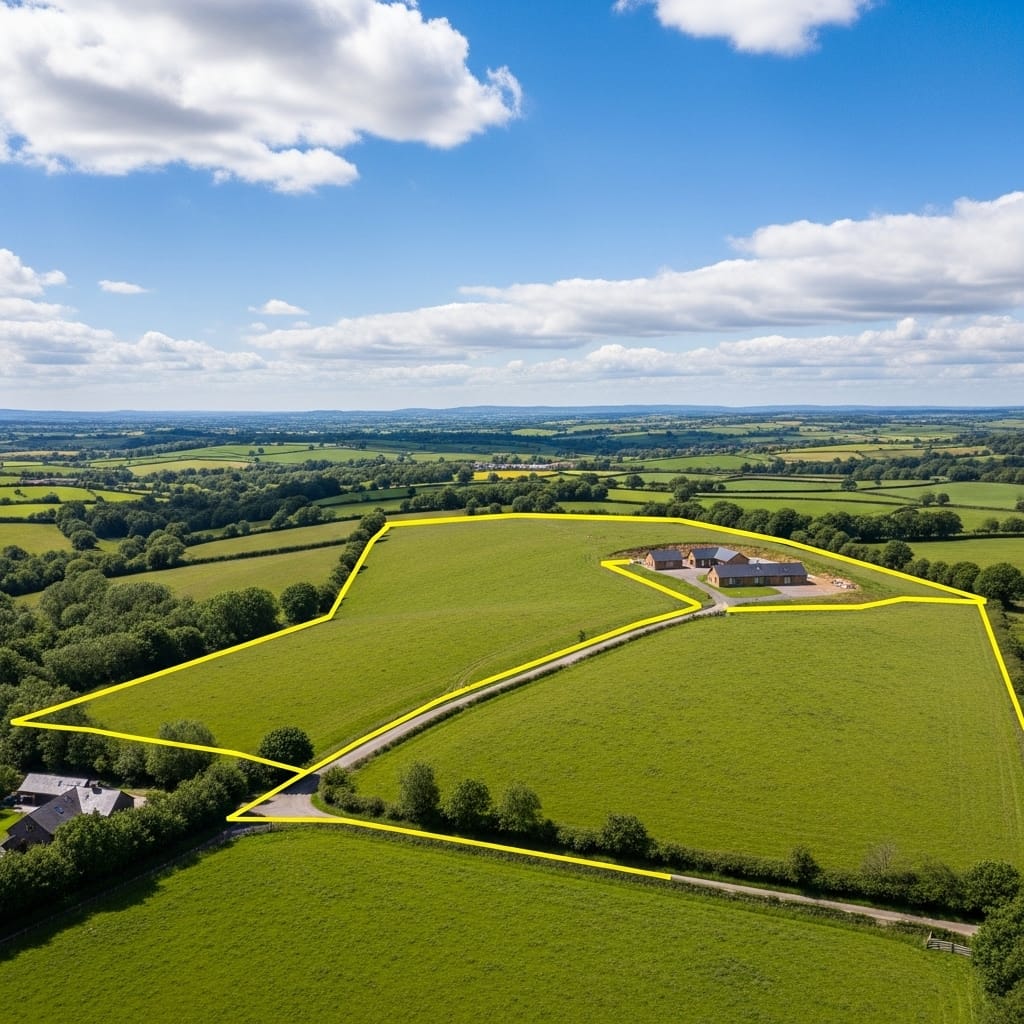
Your Ultimate Guide to Finding and Buying Land for Sale in the UK
The dream of building your own home from the ground up, cultivating a smallholding, or simply owning a slice of the beautiful British countryside is a powerful one. The phrase “land for sale near me” is likely one of the first things you’d type into a search engine to begin this exciting journey. But beyond that initial search lies a complex and rewarding process. Buying land is a significant undertaking, vastly different from purchasing an existing property. It’s an adventure that requires diligence, research, and a clear vision. This comprehensive guide will walk you through everything you need to know, from understanding the different types of land available to navigating the intricacies of planning permission and sealing the deal.
Why Buy Land? Unearthing the Potential
Before we delve into the practicalities, it’s worth considering the diverse reasons people seek to buy land. For many, it’s the ultimate expression of personal freedom – the chance to design and build a bespoke home perfectly tailored to their lifestyle. This is the path of the self-builder, a growing community in the UK driven by the desire for unique, energy-efficient, and characterful homes.
Others are drawn to the commercial potential. A well-located plot with the right permissions can be a lucrative development project. Then there are those with a passion for agriculture or conservation. Acquiring agricultural land can be the first step towards a smallholding, a farm-to-table enterprise, or simply a more self-sufficient way of life. Woodland purchases often appeal to those seeking a private retreat, a sustainable source of fuel, or the opportunity to manage and enhance a natural habitat. Finally, some see land as a tangible and stable long-term investment, a legacy to pass down through generations.

Decoding the Language of Land: Types of Plots Available
When you start your search, you’ll encounter various classifications of land. Understanding these terms is crucial as they dictate the land’s potential use and value.
- Greenfield Land: This refers to land that has never been built on before, often agricultural fields or undeveloped countryside. While aesthetically pleasing, gaining planning permission to build on greenfield sites can be challenging due to stricter planning policies aimed at protecting the countryside.
- Brownfield Land: This is land that has been previously developed but is now vacant or derelict. The government actively encourages the redevelopment of brownfield sites to regenerate urban areas and reduce pressure on greenfield land. These plots often come with existing utility connections, which can be a significant advantage, but may also require remediation work to deal with contamination from previous industrial use.
- Serviced Plots: This is the self-builder’s dream. A serviced plot is a parcel of land where the essential infrastructure – access roads, water, electricity, gas, and sewerage – is already in place. These plots are often sold with outline or even full planning permission, streamlining the building process considerably.
- Agricultural Land: This land is designated for farming purposes, such as growing crops or grazing livestock. Converting agricultural land for residential use is notoriously difficult and requires a compelling justification, such as the need for a farmer to live on-site.
- Woodland and Amenity Land: This category covers everything from small copses to large forests. Amenity land is typically purchased for recreational purposes, like dog walking, camping, or simply enjoying nature. While you generally cannot build a permanent dwelling in woodland, there may be possibilities for small structures like cabins or huts under permitted development rights, depending on the size of the plot and local regulations.
- Garden Plots: Occasionally, homeowners with large gardens will sell off a portion of their land for development. These plots have the advantage of being in established residential areas, often with good access to utilities.
The All-Important Question: Planning Permission Explained
Without the correct planning permission, your plot of land is just that – a patch of earth with limited potential for development. Navigating the UK planning system can seem daunting, but understanding the basics is essential for any prospective land buyer.
The Two Main Types of Planning Permission:
- Outline Planning Permission (OPP): This is an initial application to establish the principle of development on a piece of land. It confirms that the local authority agrees, in theory, to a development of a certain size and type on that site. However, it does not cover the detailed aspects of the design, such as appearance, layout, and landscaping. These details are addressed in a subsequent application for ‘reserved matters’. Buying land with OPP provides a degree of security, but there are no guarantees that the final detailed plans will be approved.
- Full Planning Permission (FPP): This is the gold standard. A plot with FPP has secured approval for a specific, detailed development plan. This removes a significant amount of risk for the buyer, as you know exactly what you are permitted to build. Consequently, land with FPP commands a much higher price than land without it.
What About Permitted Development Rights?
In certain circumstances, you may be able to undertake minor building works or change the use of land without needing to apply for formal planning permission. These are known as ‘permitted development rights’. For example, certain agricultural buildings can be converted to residential use under these rights. However, the rules are complex and subject to many exceptions and limitations. It is always wise to consult with the local planning authority or a planning consultant before assuming you can build under permitted development.
Your Search Strategy: Where to Find Land for Sale
Finding the perfect plot requires a multi-pronged approach. Don’t rely on a single source; cast your net wide to uncover the best opportunities.
- Online Land Portals: Websites specifically dedicated to listing land for sale are an excellent starting point. Major property portals also have dedicated land sections. These sites allow you to filter by location, land type, and planning status.
- Land Agents and Estate Agents: Specialist land agents possess in-depth knowledge of the local market and often have access to off-market plots that are not advertised publicly. Building a good relationship with local estate agents can also be fruitful, as they may be aware of potential garden plots or larger sites coming to the market.
- Auctions: Property and land auctions can be a fantastic place to find unique plots and potential bargains. However, the process moves quickly, and you must have all your finances and legal checks completed before the auction day. Buying at auction is a legally binding commitment.
- Local Authorities: Councils sometimes sell off their own surplus land for development. Keep an eye on your local council’s website for any such listings.
- Word of Mouth and On-the-Ground Research: Don’t underestimate the power of local knowledge. Drive around areas you are interested in, look for empty plots or derelict properties, and speak to local residents. You might just stumble upon an opportunity that no one else knows about. The traditional method of simply exploring and identifying potential sites can sometimes yield the most unique results.
Due Diligence: The Crucial Checklist Before You Buy
Once you’ve found a promising plot, the real work begins. Thorough due diligence is non-negotiable and can save you from making a very costly mistake. Here are the key areas to investigate:
- Access: How will you get to the land? Is there direct access from a public highway? If not, you will need a legal right of way over a third party’s land. Establishing this can be complicated and expensive. Be sure to clarify the exact nature of any access rights.
- Utilities: Are essential services like water, electricity, gas, and mains drainage readily available? Check the proximity of connection points. The cost of bringing utilities to a rural or isolated site can be astronomical, potentially running into tens of thousands of pounds. Contact the relevant utility companies for a quotation.
- Ground Conditions and Contamination: The type of soil and the geology of the site can impact foundation costs. It’s wise to commission a soil survey. If you are considering a brownfield site, a more extensive environmental survey will be necessary to check for contamination from previous industrial use, which you would be liable to clean up.
- Covenants, Easements, and Wayleaves: The property deeds (or Title Register) will reveal any legal restrictions or rights affecting the land. A covenant is a promise to do or not do something, such as a restriction on the type or height of property you can build. An easement is a right for someone else to use your land for a specific purpose, such as a public footpath crossing the plot. A wayleave is a right for a utility company to run pipes or cables over or under your land. A solicitor is essential for interpreting these complex legal documents.
- Flood Risk: Check the Environment Agency’s flood maps to assess the risk of flooding from rivers or the sea. You should also consider surface water flood risk, which can be a problem even in areas far from a river.
- Local Planning Policies: Familiarise yourself with the Local Plan for the area. This document outlines the council’s vision for future development and designates specific areas for housing, commercial use, or conservation. Your proposed development is far more likely to be approved if it aligns with the Local Plan.
Financing Your Land Purchase
Securing finance for a land purchase is different from getting a standard mortgage for a house. Many high-street lenders are hesitant to lend on land alone, as it offers less security than a property. You will likely need to explore specialist financing options:
- Self-Build Mortgages: These are specifically designed for individuals building their own home. The funds are typically released in stages as the build progresses, for example, after the foundations are laid, when the structure is watertight, and upon final completion. Lenders will want to see detailed costings and approved plans before they agree to lend.
- Bridging Loans: These are short-term loans that can be useful for buying land at auction or securing a plot quickly. However, they come with high interest rates and you will need a clear exit strategy, such as securing a self-build mortgage or selling the land on.
- Developer Finance: If you are planning a larger commercial development, you will need to seek out specialist commercial lenders who understand the property development market.
- Cash Purchase: Being a cash buyer puts you in the strongest possible position, giving you significant bargaining power and the ability to move quickly when an opportunity arises.
Making an Offer and Completing the Purchase
Once your due diligence is complete and your finances are in order, it’s time to make an offer. Your offer should be ‘subject to contract’ and may also be ‘subject to survey’. It’s advisable to engage a solicitor early in the process. They will handle the legal conveyancing, carry out detailed searches, review the contract, and manage the transfer of funds.
The journey from finding a plot of “land for sale near me” to finally holding the deeds is a marathon, not a sprint. It demands patience, persistence, and a healthy dose of realism. But for those who successfully navigate the challenges, the rewards are immeasurable. Whether it’s the profound satisfaction of building your own home, the financial return on a savvy investment, or the simple joy of owning your own piece of the UK, buying land is an opportunity to create something truly lasting. So, start your research, define your vision, and take the first step towards turning your dream into a reality.







